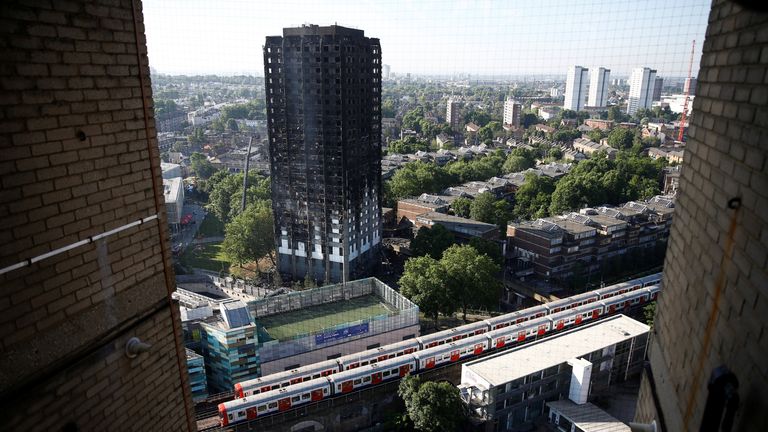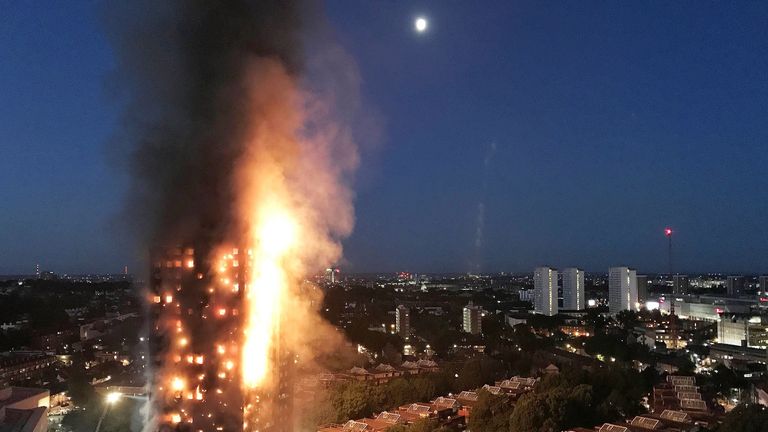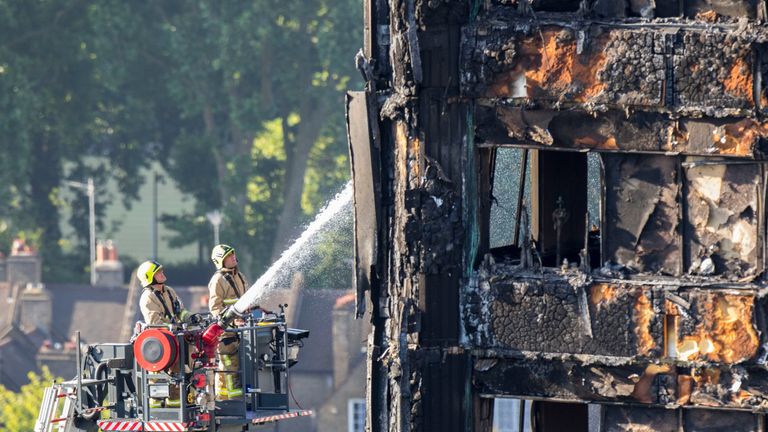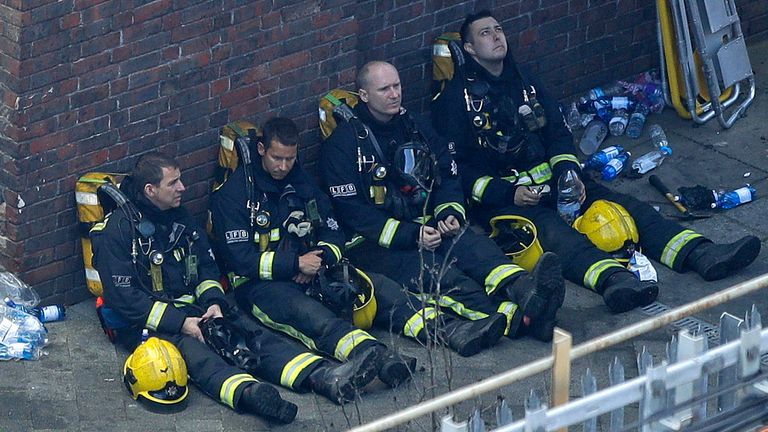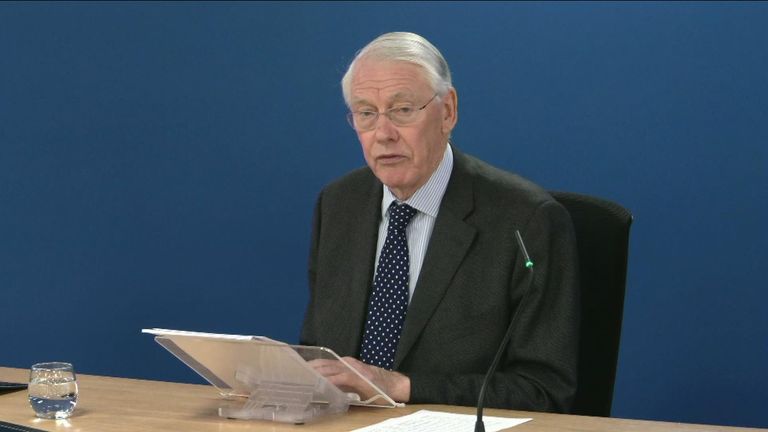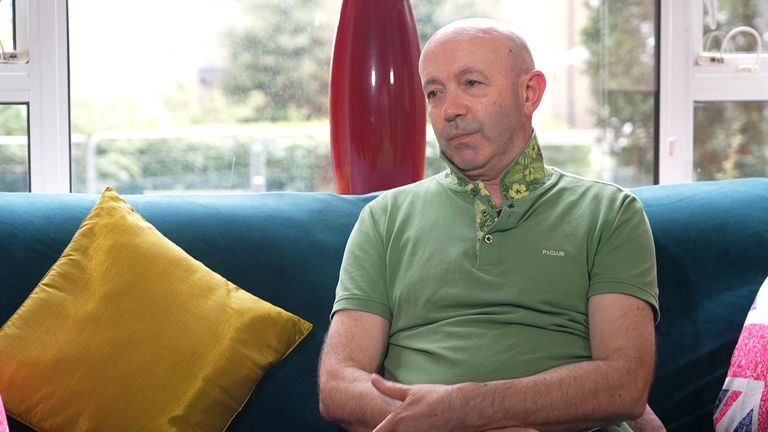‘Systematic dishonesty’ from cladding firms and government inaction, Grenfell inquiry finds
The government was “well aware” of the deadly risks posed by combustible cladding and insulation a year before the Grenfell Tower fire, but “failed to act on what it knew”, a landmark report has found.
The report also said “systematic dishonesty” from cladding and insulation companies and a “toxic” relationship between the tower’s residents and the Tenant Management Organisation (TMO), which was responsible for running services, were contributing factors.
More than seven years on from the fire that claimed 72 lives, Grenfell Inquiry chair Sir Martin Moore-Bick has published his final findings into how the building in west London came to be in such a deadly state.
Sir Martin also concluded:
• Government officials were “complacent, defensive and dismissive” on fire safety, while cutting red tape was prioritised
• There was an “inappropriate relationship” between approved inspectors and those they were inspecting
• Grenfell residents who raised safety concerns were dismissed as “militant troublemakers”
The report details what it calls a “path to disaster” and “decades of failure”.
It asked: “How was it possible in 21st century London for a reinforced concrete building, itself structurally impervious to fire, to be turned into a death trap?”
“There is no simple answer to that question.”
Sir Martin’s report runs to nearly 1,700 pages, and encompasses years of work and the testimony of hundreds of witnesses.
It contains 58 recommendations to ensure a similar disaster never happens again.
Giving a statement as the report was released, Sir Martin said: “The simple truth is that the deaths that occurred were all avoidable, and those who lived in the tower were badly failed over a number of years and in a number of different ways by those who were responsible for ensuring the safety of the building and its occupants.
“Not all of them bear the same degree of responsibility for the eventual disaster.
“But, as our reports show, all contributed to it in one way or another, in most cases through incompetence, but in some cases through dishonesty and greed.”
Complacency in government
The first phase of the inquiry’s report found in 2019 that combustible cladding was the primary cause of the rapid spread of the fire.
The inquiry has now concluded that the tragedy was the culmination of those in charge failing for decades to properly consider the risks of combustible materials on high-rise buildings, while ignoring the mounting evidence before them.
Read more:
The Grenfell children who survived the blaze
Grenfell victims likely to wait over a decade for justice
Successive governments missed opportunities to prevent the tragedy.
The deadly risks of combustible cladding panels and insulation had been identified as early as 1991, when a fire engulfed the Knowsley Heights tower block in Huyton, Merseyside.
The block had recently been covered in “rainscreen” cladding.
Six people were killed at Lakanal House in Camberwell, south London, in 2009 after a fire spread to combustible cladding.
“By 2016 the department [for communities and local government] was well aware of those risks, but failed to act on what it knew,” the report states.
It adds that by the time Grenfell Tower was being renovated in the 2010s, a “seriously defective” system was in place to regulate the construction and refurbishment of high-rise buildings.
Unsafe products kept on market and dangers ‘deliberately concealed’
The report condemns cladding and insulation firms involved in this work, saying they engaged in “deliberate and sustained strategies to manipulate the testing processes, misrepresent test data and mislead the market”.
It said that “systematic dishonesty” from the companies resulted in hazardous materials being applied to the block.
Arconic, the company that made cladding for Grenfell Tower, “deliberately concealed” the danger of the panels used on the tower, while Celotex, which supplied most of the insulation, similarly “embarked on a dishonest scheme to mislead customers”.
Kingspan knew its insulation product failed fire safety tests “disastrously” but continued to sell it to high-rise buildings, the report found.
Be the first to get Breaking News
Install the Sky News app for free



The firms got away with this because the various bodies designed to oversee and certify their products repeatedly failed to monitor and supervise them.
Grenfell residents dismissed as ‘troublemakers’
There was also harsh criticism of the Tenant Management Organisation (TMO), which was responsible for running services at Grenfell Tower.
Residents who raised concerns about safety were dismissed as “militant troublemakers”, while there was “a toxic atmosphere” with the TMO “fuelled by mistrust of both sides”.
👉 Tap here to follow the Sky News Daily podcast – 20 minutes on the biggest stories every day 👈
Relations “were increasingly characterised by distrust, dislike, personal antagonism and anger” and “some, perhaps many, occupants of the tower regarded the TMO as an uncaring and bullying overlord that belittled and marginalised them”.
The TMO and the Royal Borough of Kensington and Chelsea were jointly responsible for managing fire safety at Grenfell Tower – but the years between 2009 and 2017 were marked by a “persistent indifference to fire safety”, the report said.
Next steps
The Counsel for the inquiry has accused parties involved in the disaster of a “merry-go-round of buck-passing” – largely blaming each other for the disaster.
The inquiry can’t make findings of civil and criminal liability.
Now its work is complete, the police investigation into the disaster will continue.
The UK Tonight With Sarah-Jane Mee will have a special programme on the Grenfell Tower report at 8pm on Sky News
